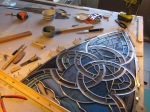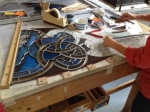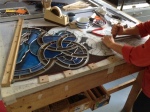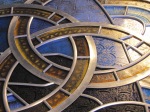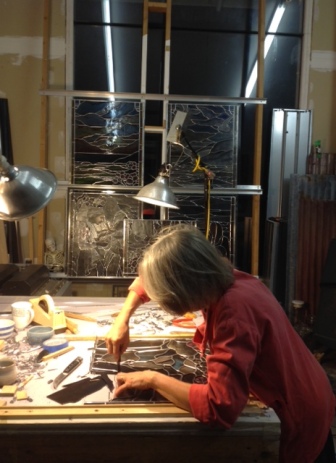Hurrah! We are beginning to lift our Covid-19 restrictions in Vermont. So if you’ve been waiting to take a design or glasspainting workshop with me you may. At last!
Hands-on, in-person, 5-day stained glass workshops will start September 20th 2021.
Right before the pandemic I created a new curriculum, a series of three stand-alone 5-day workshops. Maximum 6 people per workshop. Suitable for all skill levels with plenty of one-on-one tuition and playful group exercises to counteract any self-doubt or artistic insecurity.
Here’s the schedule. Workshops begin on September 20th 2021 with an introduction to glasspainting workshop followed by a stained glass design workshop and an advanced glasspainting workshop. Those who want to learn glasspainting and design in a single trip to Vermont may sign up for two or three adjacent workshops. More information here.
Instruction includes Powerpoint presentations, technical demonstration, hands-on group exercises and individual projects. I teach practical skills and repeatable, step-by-step processes that are difficult to learn online or figure out on your own. You can learn how to mix slow-drying glasspaints to optimum viscosity for hand-writing, simple printmaking, wet scraffito and elegant, fluid brushwork; how to paint faux textures like stone, wood, feathers and fabric; and how to design a painted stained glass window from your own reference material.
Tuition costs $860 for each 5-day workshop and includes lunch and materials. Go to coombscriddle.com for a schedule, workshop descriptions, and general information on location, hours, scholarships, accommodations and more. If you have questions, shoot me an email. Prefer to chat? Email me your mobile number and we’ll use text to schedule a phone call.
Why do I teach stained glass? In the midst of a glasspainting demo I gave in my last workshop one student said, I just learned more in 5 minutes that I did in 3 years of trying to figure it out on my own! Read this post about craftsmanship. Tip: there are some things that just cannot be learned from YouTube! Having said that, you may indeed watch videos of my beautifully responsive glasspainting mixture in action or read the story of my proprietary glasspainting recipe to get an idea. And if you’re wondering what it’s like here in Vermont, where workshops take place, watch the 11-minute video of me painting a stained glass window in my studio.
Lastly, if you’re curious about what drives me as an artist, listen to this interview about my life’s work in stained glass and how I transitioned to the mathematical work I’ve been doing in recent years. My resume in 57-minutes! Many thanks to interviewer Shawn Waggonner. She really got me to open up!









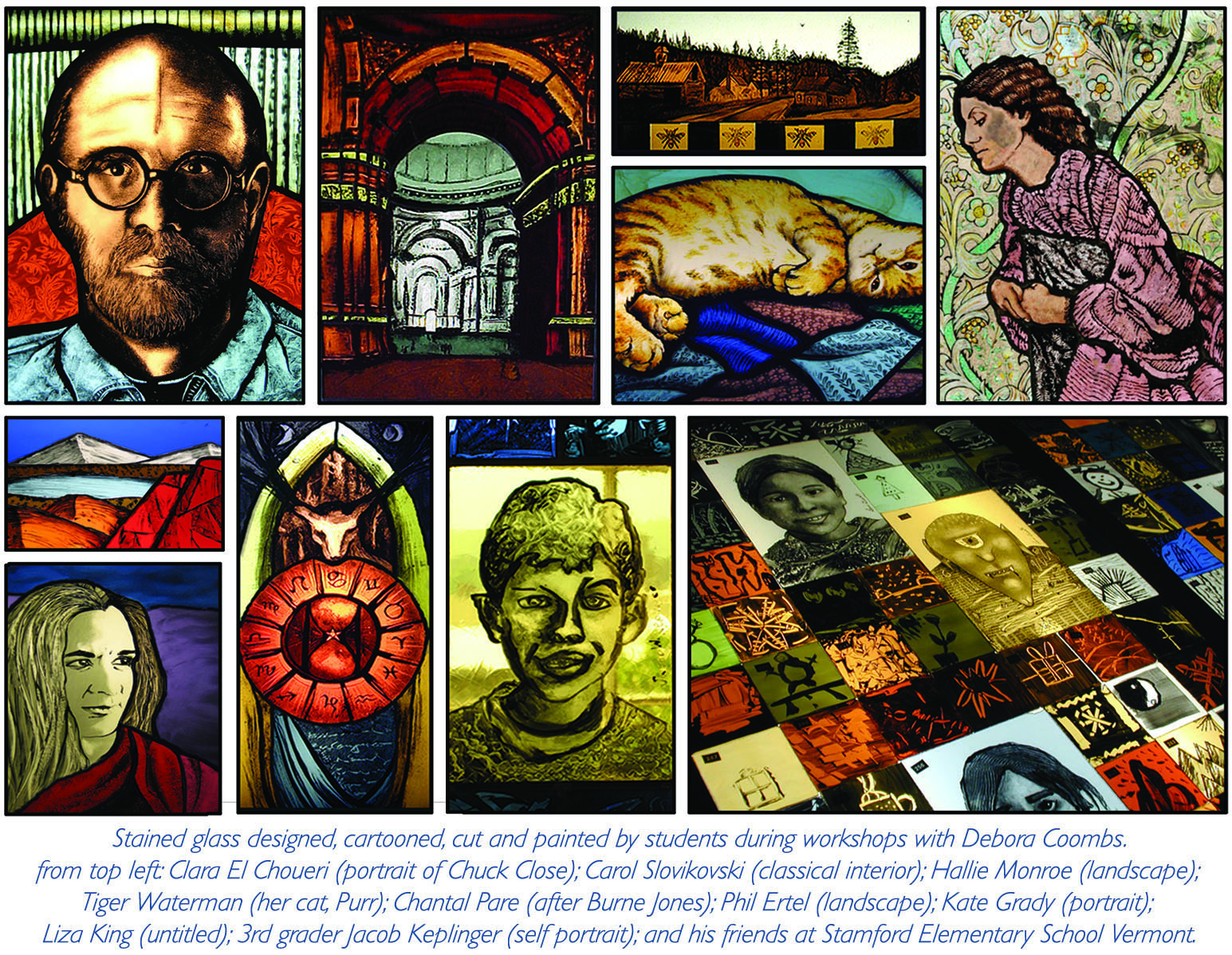 This year, I am offering week-long design and glasspainting workshops in June; 3-hour Saturday Afternoon Intensives; and a 10 week series of evening classes beginning March 10th. All at my studio in Vermont. Here’s the
This year, I am offering week-long design and glasspainting workshops in June; 3-hour Saturday Afternoon Intensives; and a 10 week series of evening classes beginning March 10th. All at my studio in Vermont. Here’s the 














